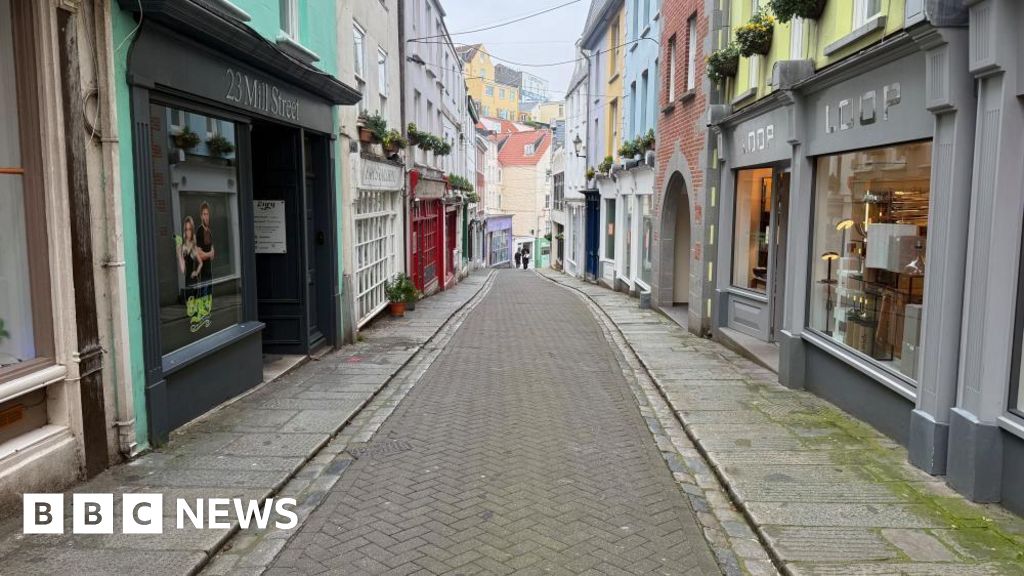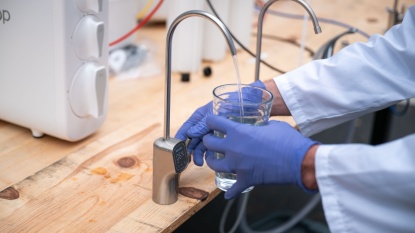Orem water treatment plant hosts tour, showing how potable water reaches taps for 2 million people – FOX 13 News Utah

Report on Water Infrastructure Resilience and Sustainable Development in Utah
Advancing SDG 6: Clean Water and Sanitation
- The Don A. Christiansen Regional Water Plant in Orem is a critical facility for regional public health and well-being.
- It provides clean, treated drinking water to a population of approximately two million people across Utah and Salt Lake Counties.
- This operation directly supports the objectives of Sustainable Development Goal 6, which aims to ensure universal access to safe and affordable drinking water.
- The plant utilizes water sourced from the Wasatch Mountains, which flows through the Provo River before treatment.
Fostering Resilient Infrastructure in Alignment with SDG 9 and SDG 11
A key project is underway to enhance the resilience of the region’s water delivery system, directly contributing to SDG 9 (Industry, Innovation, and Infrastructure) and SDG 11 (Sustainable Cities and Communities).
- Vulnerability Assessment: A primary water pipeline located in Provo Canyon has been identified as vulnerable due to its proximity to the Wasatch Fault Line, posing a significant risk during a potential earthquake.
- Proactive Infrastructure Upgrade: To mitigate this risk, the Central Utah Water Conservancy District is replacing a portion of the pipeline, spanning just over one mile.
- Innovative Engineering for Disaster Resilience: The replacement pipeline features a specialized design with joints that permit expansion, contraction, and angular movement. This engineering solution is designed to maintain the pipeline’s integrity and functionality during seismic ground displacement, ensuring a continuous water supply post-disaster.
- Enhancing Urban Sustainability: By safeguarding the water supply against natural disasters, this project strengthens the resilience of local communities, a core target of SDG 11.
Governance and Strategic Planning for a Sustainable Future
- The project has received attention from state and federal officials, including Congressman Mike Kennedy, who toured the facility to understand the engineering complexities and the importance of the resilience initiative.
- The proactive measures demonstrate a forward-looking governance approach, recognizing and preparing for inevitable natural hazards.
- This strategic planning aligns with the principles of disaster risk reduction embedded within the Sustainable Development Goals, ensuring that essential services are protected for future generations.
SDGs Addressed in the Article
-
SDG 6: Clean Water and Sanitation
The article’s primary focus is on the provision of clean drinking water to a large population. It describes the Don A. Christiansen Regional Water Plant’s role in treating and delivering water, which is central to the goal of ensuring the availability and sustainable management of water.
-
SDG 9: Industry, Innovation, and Infrastructure
The text highlights the development of resilient infrastructure. The replacement of a pipeline with a design that can withstand earthquakes is a direct example of building reliable and resilient infrastructure to ensure continuous service. The article refers to the plant as a “remarkable engineering feat” and details the innovative features of the new pipeline.
-
SDG 11: Sustainable Cities and Communities
The article addresses the goal of making cities and human settlements safe, resilient, and sustainable. By proactively upgrading the water pipeline to be earthquake-resistant, officials are working to protect a critical urban service and mitigate the potential impact of a natural disaster on the community, ensuring the city’s resilience.
Specific SDG Targets Identified
-
Target 6.1: Achieve universal and equitable access to safe and affordable drinking water for all.
The article directly relates to this target by stating that the water plant’s purpose is to provide “clean drinking water” and that it “deliver[s] water to about 2 million people from this plant.” This demonstrates a large-scale effort to provide safe drinking water to the residents of Utah and Salt Lake County.
-
Target 9.1: Develop quality, reliable, sustainable and resilient infrastructure… to support economic development and human well-being.
This target is addressed through the description of the pipeline replacement project. The article explains that officials are replacing a portion of the pipeline near the Wasatch Fault Line. The new design allows for “expansion, contraction and angular movement,” making it a resilient piece of infrastructure designed to “continue to deliver water” even during an earthquake, thus ensuring reliability and supporting human well-being.
-
Target 11.5: Significantly reduce the number of… people affected and… decrease the direct economic losses… caused by disasters.
The proactive replacement of the pipeline is a direct measure to mitigate the effects of a potential earthquake. By ensuring the pipeline can “move so that we can continue to deliver water through that period of time,” the project aims to reduce the number of people who would be affected by a water outage following a disaster. This preparation protects critical infrastructure and reduces the potential for service disruption.
Indicators for Measuring Progress
-
Indicator related to Target 6.1 (Implied: 6.1.1 – Proportion of population using safely managed drinking water services)
The article provides a direct quantitative measure relevant to this indicator by stating that the plant delivers water to “about 2 million people.” This figure can be used to measure the proportion of the regional population served by this safely managed water source.
-
Indicator related to Target 9.1 and 11.5 (Qualitative)
The article does not provide a specific UN indicator but implies a qualitative one for measuring progress in building resilient infrastructure. The description of the pipeline replacement project itself serves as an indicator of action and investment. Specific details, such as replacing “just over a mile” of pipeline with a design that allows for “expansion, contraction and angular movement,” are qualitative measures of the effort to enhance infrastructure resilience against seismic events.
Summary Table: SDGs, Targets, and Indicators
| SDGs | Targets | Indicators |
|---|---|---|
| SDG 6: Clean Water and Sanitation | 6.1: Achieve universal and equitable access to safe and affordable drinking water for all. | The number of people served with clean drinking water, stated in the article as “about 2 million people.” |
| SDG 9: Industry, Innovation, and Infrastructure | 9.1: Develop quality, reliable, sustainable and resilient infrastructure. | The replacement of “just over a mile” of pipeline with a seismically resilient design featuring “expansion, contraction and angular movement.” |
| SDG 11: Sustainable Cities and Communities | 11.5: Significantly reduce the number of people affected and decrease direct economic losses caused by disasters. | The proactive implementation of an earthquake-resistant pipeline project to ensure continuous water delivery post-disaster, thereby reducing the number of affected people. |
Source: fox13now.com
What is Your Reaction?
 Like
0
Like
0
 Dislike
0
Dislike
0
 Love
0
Love
0
 Funny
0
Funny
0
 Angry
0
Angry
0
 Sad
0
Sad
0
 Wow
0
Wow
0


















































.jpg.webp?itok=0ZsAnae9#)






/environment-climate-change-and-health-(ech)/water-sanitation-hygiene-and-health-(wsh)/landfill-tuvalu-36092.tmb-1200v.jpg?sfvrsn=5c21fe40_1#)


















